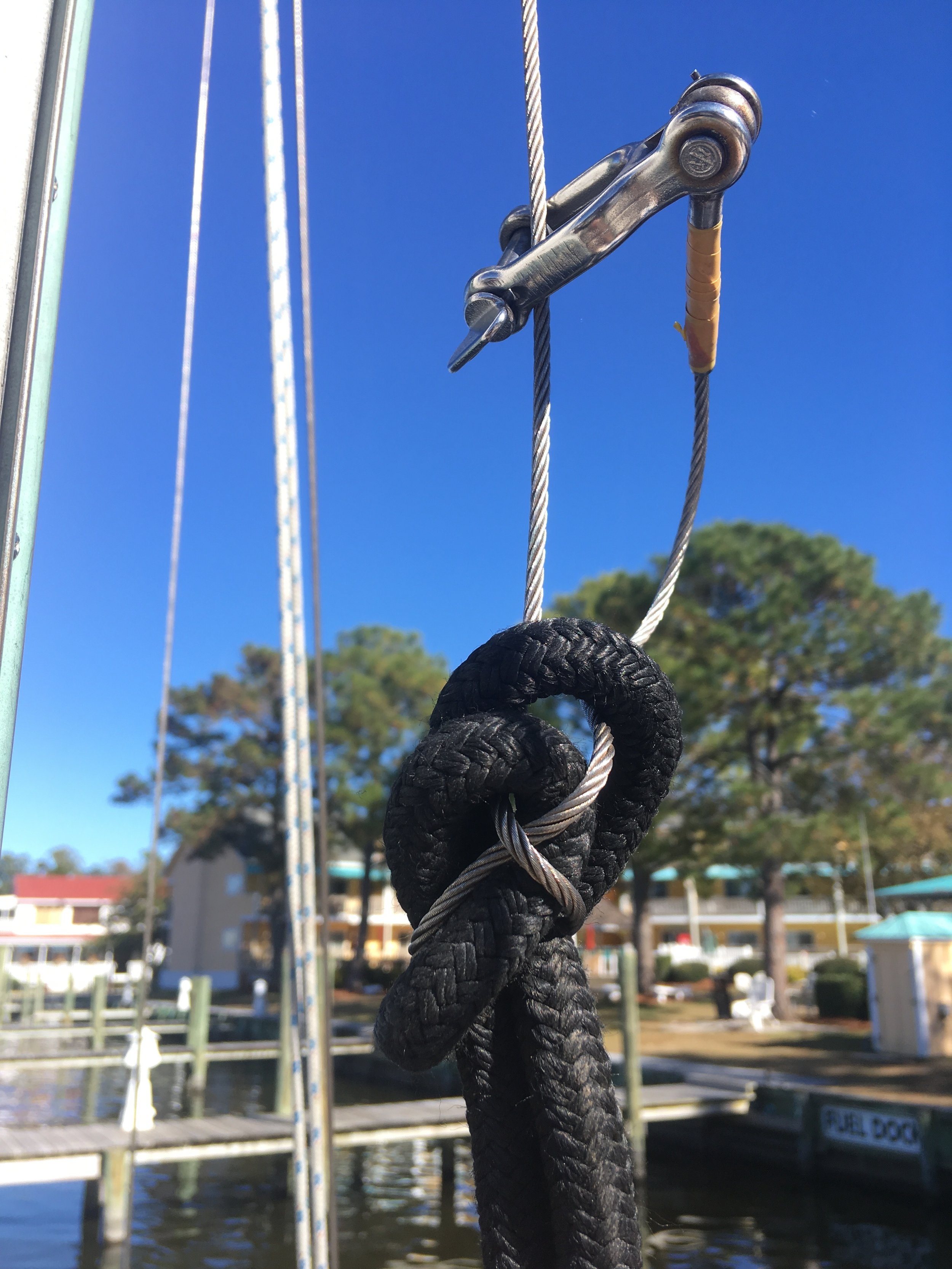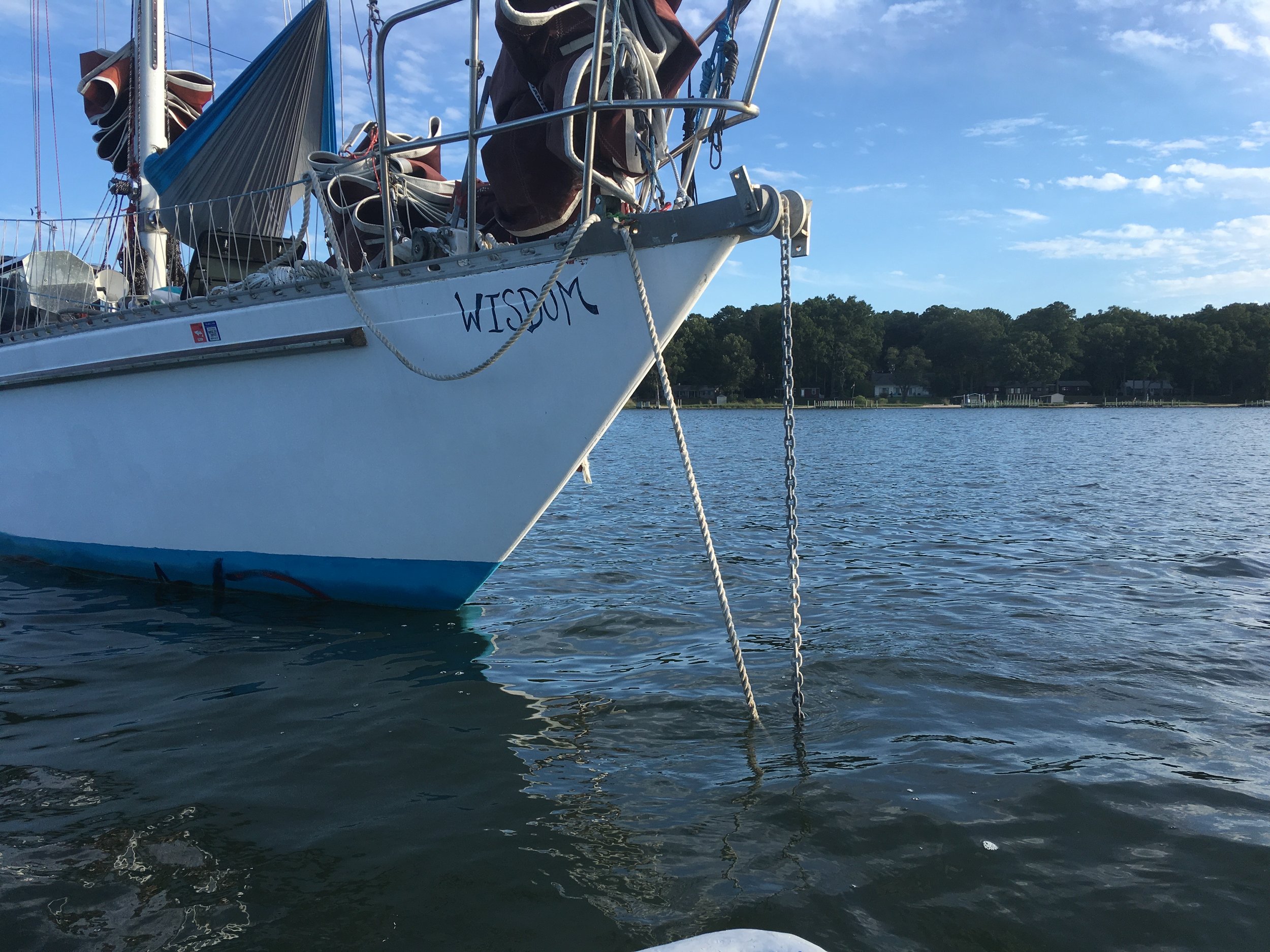Davits are a convenient attachment that will allow you to raise your dinghy out of the water behind your boat. They hang out over the stern like crane arms and allow you to pull the dinghy straight up. When you are ready to launch the dinghy, all you have to do is release the davit lines and lower the dinghy back in.
Davits are convenient but they suffer two major flaws. Their first flaw is that the dinghy now is hanging behind your boat right side up. If you are in a following sea, you risk a boarding wave filling the dinghy with water that will rapidly add a significant amount of weight to the back of your boat. This usually results in the davits being bent or ripped off the back of your boat as your dinghy plummets into the sea behind you. Now, you are dragging a drogue of your mangled davits and dinghy.
The second flaw with davits is they are expensive. Cheap davits are a few hundred dollars and are not worth the money. I purchased some very inexpensive Davits to raise my dinghy out of the water. The arms were too short so the dinghy kept hitting the transom on its way up; and the purchase system was so puny that I couldn't raise a simple 80 pound dinghy. More expensive davits solve these issues by having much longer arms that hold the dinghy further from the boat to solve the transom clearance issues. They also have better purchase systems and sometimes, even a winch system to crank the dinghy right up. These better systems will not cost you hundreds, but instead, thousands of dollars!
So, you decided that you don't want to carry your dinghy like a bucket waiting to be filled with water behind your boat, and you also don't want to fork over thousands of dollars. What else can you do?
The answer is easy! All you need to do is store the dinghy on your deck. If you are coastal, you can keep the dinghy right side up. If you are offshore, simply flip the dinghy over to keep it from being filled with water by a boarding wave. Now, how do you get the dinghy onto your deck?
Your mast and boom are capable of serving more purposes than just holding your sails. They can also be used as your own oversized davit system. All you will need to do is add a length of rope to act as an outhaul. That's it!
In the dinghy, you just need three small lines that run to the two stern corners and one to the bow ring. These are standard on all dinghies and referred to as the lifting rings. The three lines are led to the halyards shackle, allowing you to pick the dinghy up from a single point. It is important to custom tie the lines so that the weight of the dinghy is balanced and the dinghy hangs level. Remember, most of the weight in a boat is located by the stern, so the bow line will be a bit long and the stern lines a bit short.
Now, the second thing you need to do is setup an outhaul system. An outhaul is merely a line that pulls something away from the center. The outhaul on your mainsail pulls the clew aft, and the outhaul on your hoist will pull the halyard aft. Having the outhaul attach to the end of the boom allows you to control the position of the dinghy with the boom.
Now, as you crank on the halyard, the dinghy will raise up. Then you can pull on the outhaul to scoot the dinghy aft. I have found it best to also raise your boom really high up by cranking on the topping lift before you start, as this gets the boom and sails out of the way of the dinghy as you raise it up.
As the dinghy climbs upwards, you can push the dinghy down the boom and pull in on the outhaul. This will cause the outhaul to pull the halyard aft and scoot the dinghy along the boom.
Once the dinghy is up and out towards the end of the boom, you can push the boom over to swing the dinghy out over the water and clear of the boats deck. You might think that a forward guy would be needed to pull the boom outward, but the truth is, as the boom swings outward, the weight of the dinghy will cause the boat to heel in that direction. This then unbalances the system and causes the boom to swing out even further! Basically, it will swing out for you and stay there.
Once the dinghy is swung outward, you can then safely lower the dinghy into the water.
Recovering the dinghy is the exact opposite, and just as easy. This lets you easily and safely raise and lower your dinghy onto your deck without risking anyone's back or spending a lot of money. The only real cost to you will be an outhaul line, which ideally should be twice the length of your boom. This will allow you to lead the line from the dinghy, out to the end of the boom and back to the mast. You also need a shackle that will allow the halyard to fit through. You don't need to have a shackle, but it will reduce the resistance and chafe that the lines will endure.

























